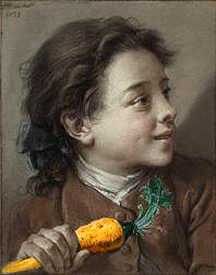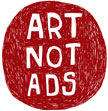9.23.2007
John Mitchell's comments about the Buchel exhibit at Mass MoCA are too insightful and important to get lost under the comments section of my earlier post. Mitchell, the arts and entertainment editor of the North Adams Transcript (where Mass MoCA is located) has been kind enough to post his article Buchel and MoCA: An Unlikely Collaboration in the comments. Mitchell and I came to a similar conclusion about the Times' definition of art, although he actually beat the Times to the punch- (and he puts it much more eloquently than I did):
Back to the original question, though — is it art? Well, it's all happening in an art museum and involves official correspondence on art museum letterhead to art museum lawyers in regard to the behavior of an artist. Sounds like art to me. And doesn't art lurk in everyday life, anyhow? Don't you see art in the way children discover the world and buildings crumble and lovers quarrel? Isn't there painful art to be pulled from war and politics and disease? Is there any reason why insider art world squabbling and legal disagreements can't be art? Is there actually any reason why anything can't be art?Mitchell's post-NYTimes reaction can be found on his blog, The Last Visible Blog:
If art is measured by what you get out of it rather than what the creator puts into it, then the bizarre sight of a portion of North Adams inside a factory building and blocked off with tarps and surrounded by legal red tape might someday be considered art by the highest authority on such matters — whoever that might be.
[The New York Times article] doesn’t understand that MoCA’s mission within the community has been to present the creation of art with some level of transparency - installations are often viewable as they are being set up - for the purpose of education and understanding of the process of art, in order to make it something that people see the method behind and accept - and, within those circumstances, their actions in regard to Buchel’s installation have been perfectly natural and keeping in line with history. And it presents the argument - one that I wholly, completely disagree with - that it is always the artist who decides when the work is officially the work of art. Another of Mass MoCA’s missions has been to democratize the process of deciding what is art, of opening up the notions of what can be art and why it can be art.Here he touches on what I find to be the crux of the issue. Museums, like schools, are places of learning. As teachers, we can either tell students 'what art is' and have them nod and write it down in their books - or we can open up a discussion and empower the students to examine, debate, and ultimately decide for themselves. Its this process of discovery that helps develop critical thinking skills. Museums by nature, have traditionally been undemocratic in this approach. If its on the wall of a museum, its either art, a card telling you about art, or its a light switch (I'm generalizing here, of course, there are a number of excellent museums which break this mold, PS1 in Queens, New York is a fine example). As Mitchell points out, however, in opening this dialog, Mass MoCA is doing the same thing that we strive to do in our classrooms; showing that art is for everyone.
Tags: Buchel, Installation Art, Mass MoCA, Musings, News, What is Art?
0 Comments:
Subscribe to:
Post Comments (Atom)














